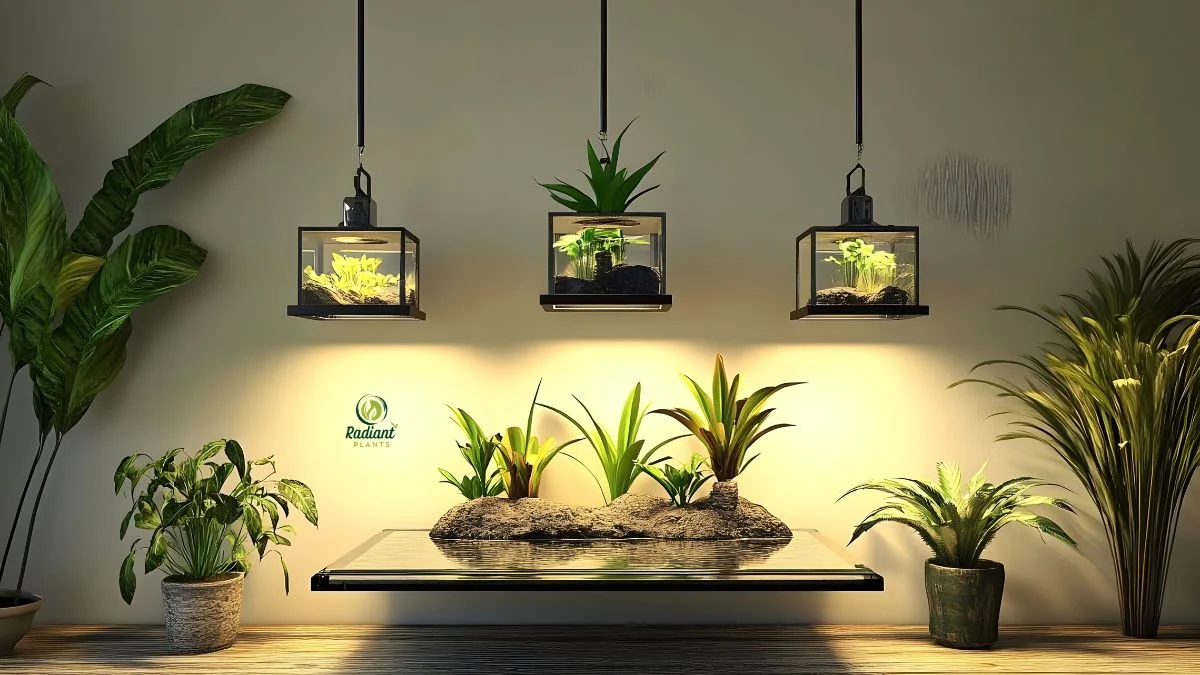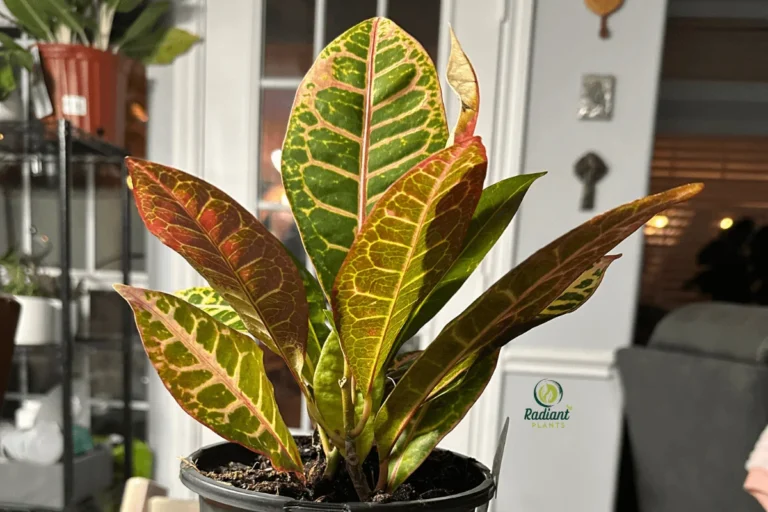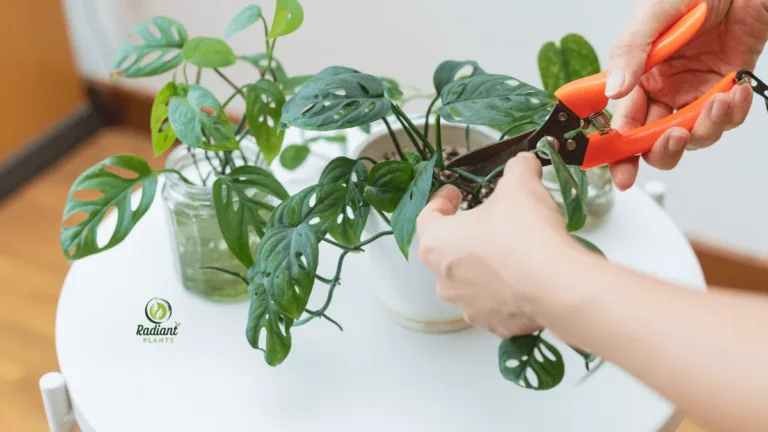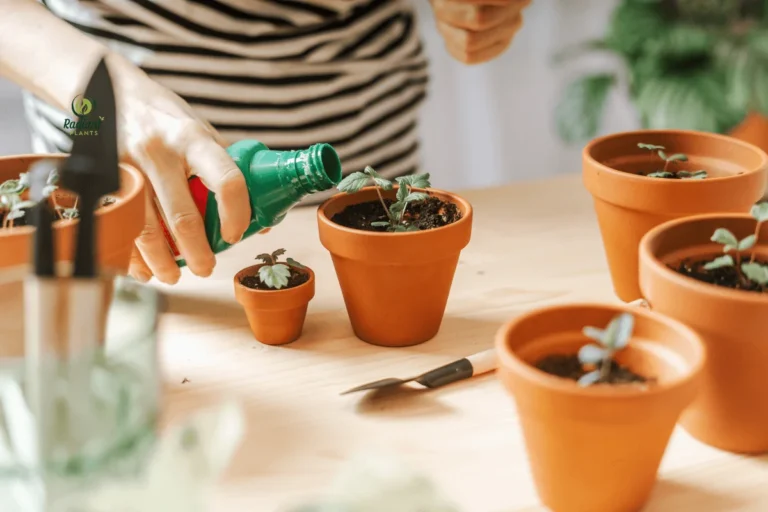UV Lamp for Plants: Indoor Gardening Made Easy
If your indoor plants aren’t thriving the way you hoped, a UV lamp for plants might be the missing piece in your gardening toolkit. These specialized lights mimic the sun’s ultraviolet rays, helping your greenery grow stronger, healthier, and more vibrant—even in spaces that don’t get enough natural sunlight. Whether you’re nurturing delicate tropical foliage, colorful ornamentals, or curious seedlings, understanding how to use UV light can transform your indoor garden.
In this guide, you’ll discover exactly how UV lamps for plants work, how to choose the right type for your space, and how to safely integrate them into your routine. We’ll also cover common mistakes to avoid, tips for propagation, and expert advice to help your plants flourish. By the end, you’ll have all the insights you need to give your indoor jungle the light it craves—boosting growth, color, and overall plant health with confidence.
Table of Contents
What Is a UV Lamp for Plants?
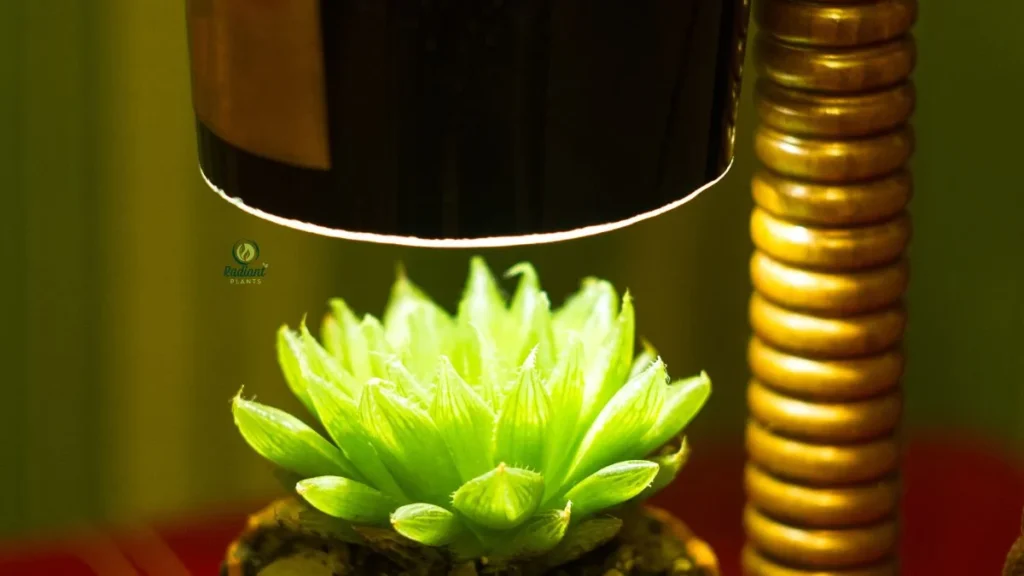
A UV lamp for plants is a specialized grow light designed to mimic the ultraviolet (UV) spectrum of natural sunlight, which is essential for healthy plant growth. While visible light drives photosynthesis, UV light—particularly UVA and UVB—plays a unique role in enhancing plant development, pigmentation, and overall resilience. Understanding the UVA vs UVB spectrum is key: UVA (315–400 nm) supports leaf thickness, stronger stems, and natural coloration, while UVB (280–315 nm) can stimulate protective compounds, antioxidants, and certain secondary metabolites, giving ornamental plants their vivid hues. UVC, on the other hand, is mostly harmful and rarely used in plant care.
Using UV light correctly can benefit indoor plants in multiple ways. It can increase chlorophyll production, resulting in richer green foliage, and boost the production of pigments such as anthocyanins, which create stunning reds and purples. Additionally, UV exposure can strengthen plant immunity, helping houseplants resist pests and diseases naturally—an advantage for anyone cultivating a thriving indoor garden.
There are several types of UV lamps to consider. LED UV grow lights are energy-efficient, long-lasting, and produce targeted UVA/UVB rays without excess heat. Fluorescent UV lamps are cost-effective and widely available, ideal for smaller indoor setups. Full-spectrum lamps combine visible and UV light, offering a balanced solution that mimics sunlight more closely, making them perfect for ornamental plants that thrive under diverse light conditions.
When choosing a UV lamp for your plants, consider your species’ needs, the size of your growing space, and exposure duration. For practical guidance on indoor plant lighting setups, check out our Interior Greenery & Styling tips or explore Plant Care Tips for detailed lighting advice.
How UV Lamps Help Indoor Plants
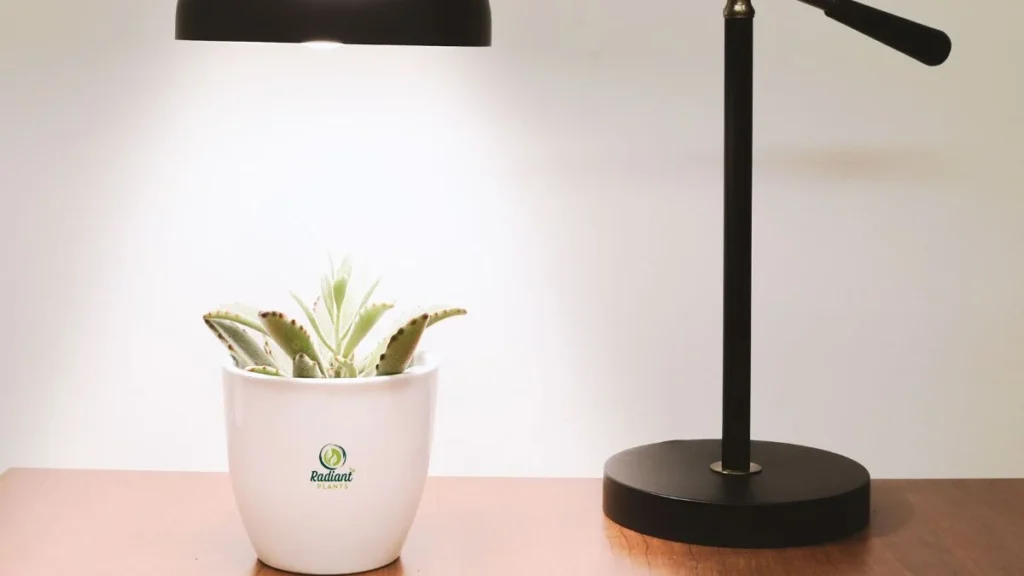
A UV lamp for plants can be a game-changer for indoor gardeners looking to boost plant health and appearance. While natural sunlight provides a full spectrum of light, many indoor spaces don’t receive enough UV radiation. By supplementing with a UV lamp, you can help your plants perform at their best—even in low-light rooms or during the winter months.
One of the most important benefits of UV light is its ability to enhance photosynthesis and growth. UV exposure encourages plants to produce more chlorophyll, which directly improves energy production and accelerates growth rates. For ornamental plants, this means fuller, more robust leaves and stronger stems that can support larger flowers and foliage. In fact, studies have shown that certain houseplants exposed to controlled UVA and UVB light can increase growth efficiency by up to 15% compared to plants under visible light alone.
UV lamps also play a crucial role in enhancing color and pigmentation. Many flowering and foliage plants produce vivid colors, such as deep reds and purples, in response to UV exposure. This happens because UV light stimulates the production of pigments like anthocyanins, giving ornamental plants their signature vibrancy. If you want eye-catching indoor greenery, a UV lamp can make a noticeable difference in leaf coloration and flower intensity.
Another advantage is strengthening plant immunity. UV light triggers natural defense mechanisms, helping plants resist stress, diseases, and environmental challenges. Some growers even report that consistent, controlled UV exposure can contribute to pest prevention, as stronger plants are less susceptible to infestations like spider mites or aphids. While UV light isn’t a substitute for proper care, it can support healthier, more resilient indoor plants.
For practical tips on combining UV lighting with general plant care, check out our Plant Care Tips guide. Proper positioning, duration, and lamp type are key to maximizing these benefits safely.
How to Use a UV Lamp for Plants

Using a UV lamp for plants effectively requires understanding placement, duration, and safety to get the best results for your indoor garden. Correct use ensures your plants thrive without risk of damage or stress.
Placement is key. Most ornamental indoor plants benefit when the UV lamp is positioned 12–24 inches above the foliage, depending on the lamp’s intensity. Too close, and leaves may develop burn spots; too far, and the light becomes ineffective. Adjustable stands or hanging fixtures allow you to fine-tune the distance as your plants grow.
Duration matters. On average, plants should receive 2–4 hours of UV exposure per day. This varies based on species and lamp type—some succulents tolerate longer sessions, while delicate tropical plants need shorter exposure. How often should plants be exposed to UV light? Controlled, consistent timing is more important than prolonged exposure. Using a timer helps maintain a consistent grow light schedule without the risk of overexposure.
Safety precautions are essential for humans and pets. Avoid direct skin or eye contact with UVB rays, which can irritate over time. Many indoor gardeners use protective covers or indirect positioning to ensure safe UV exposure while still benefiting their plants.
Finally, consider equipment setup for indoor gardening. LED UV grow lights are popular for their energy efficiency and low heat output, while fluorescent and full-spectrum lamps work well in smaller spaces. Grouping plants under a single lamp or using multiple lights for larger arrangements helps ensure even coverage.
Can UV light harm indoor plants? Yes—excessive UV can lead to leaf discoloration, curling, or stunted growth. Monitoring your plants and adjusting lamp distance, duration, and intensity is the best way to prevent damage.
For styling ideas and practical indoor setups, explore our Styling & Decor tips to integrate your UV lamps seamlessly into your living space.
Common Mistakes When Using UV Lamps
Even with the best intentions, using a UV lamp for plants can backfire if common mistakes aren’t avoided. Understanding these pitfalls ensures your indoor garden thrives without damage.
One of the most frequent errors is overexposure, which can lead to leaf burn or discoloration. UV light is powerful, and prolonged exposure—especially from high-intensity LED or fluorescent lamps—can stress plants, causing curling, brown spots, or stunted growth. Always follow manufacturer recommendations and adjust the lamp distance according to plant type and size.
Another mistake is choosing the wrong lamp type for your plant species. Not all plants require the same spectrum or intensity. For example, delicate tropical foliage may only need mild UVA exposure, while hardy succulents can tolerate stronger UVB light. Selecting the appropriate UV lamp ensures your plants receive optimal light without harm.
Poor placement and incorrect duration are also common issues. Lamps positioned too far or too close, or left on for too long or too little, can reduce effectiveness or damage leaves. Using timers and adjustable stands can help maintain a proper grow light schedule for consistent results.
Finally, ignoring safety for humans and pets is a critical error. UVB rays can irritate skin and eyes, so always use protective measures and avoid direct exposure. Safety should never be sacrificed for plant growth.
By avoiding these UV lamp mistakes, you’ll help your indoor plants flourish while keeping your home safe. For more guidance on preventing plant issues caused by lighting or other factors, visit our Troubleshooting Plant Problems guide.
Propagation and Growth Tips with UV Light

A UV lamp for plants isn’t just for mature houseplants—it can play a key role in seedling growth and propagation. Young plants often struggle under limited indoor lighting, but a controlled UV light source can give them the boost they need to establish strong roots and healthy stems.
When propagating cuttings or seedlings, place the UV lamp at an appropriate distance—usually 12–18 inches above the plants—to avoid stress while providing enough radiation for growth. UV light encourages chlorophyll production and strengthens the plant’s structure, which can accelerate root development and overall vitality. Many gardeners report that seedlings exposed to controlled UVA and UVB light grow sturdier and develop a more vibrant green color within weeks compared to those relying solely on visible light.
UV exposure also helps in encouraging stronger stems, reducing the likelihood of leggy or weak growth. For ornamental plants, this translates to more upright leaves and healthier foliage, ensuring your indoor garden looks lush and well-balanced. Combining UV light with proper watering, humidity, and nutrient care enhances propagation success even further.
Certain plants thrive particularly well together under UV exposure. Fast-growing species like basil, coleus, or pothos can benefit from shared UV lighting setups, helping you create efficient companion planting arrangements indoors. Always monitor your plants and adjust lamp height or duration to suit each species, keeping in mind that too much UV can cause stress or leaf burn.
For detailed guidance on maintaining your plants and ensuring successful propagation, check out our Plant Care Tips guide. By integrating a UV lamp for plants into your propagation routine, you can achieve stronger, healthier seedlings that develop into thriving, ornamental indoor plants.
FAQs About UV Lamps for Plants
Do UV lamps work for plants?
Yes! UV lamps for plants can boost growth, enhance leaf coloration, and strengthen immunity. UVA and UVB light stimulate chlorophyll and pigment production, making ornamental plants healthier and more vibrant. While not a complete replacement for sunlight, UV lamps are especially helpful in low-light indoor spaces.
How long should UV light be on for plants?
Most indoor plants benefit from 2–4 hours of UV exposure per day, depending on species and lamp intensity. Using a timer ensures a consistent grow light schedule and prevents overexposure, which can stress plants or cause leaf burn. Adjust the duration based on your plant type and growth stage.
Is UV light for plants safe for humans?
UV light, particularly UVB, can irritate skin and eyes if exposed directly. Always avoid direct contact, use protective covers, and position lamps to minimize human or pet exposure. Properly installed UV lamps for plants are safe when precautions are followed.
Can you give plants too much UV light?
Yes. Excessive UV exposure can cause leaf burn, curling, or stunted growth. Maintaining proper distance, duration, and intensity ensures healthy plant growth without stress. Monitor leaves and adjust the lamp accordingly.
Can UV light replace sunlight?
Not completely. UV lamps supplement sunlight by providing beneficial UVA and UVB rays, but lack the full spectrum of natural sunlight. Combining UV lighting with ambient light or full-spectrum grow lights gives plants optimal results.
What color UV light is best for plants?
For indoor plants, UVA (315–400 nm) and UVB (280–315 nm) are most effective. UVA promotes stronger stems and leaf growth, while UVB enhances pigmentation and protective compounds. Avoid UVC, which is harmful to plants and humans.
Can I use my phone light as a UV light?
No. Phone flashlights do not emit the UVA or UVB spectrum necessary for plant growth. Investing in a dedicated UV lamp for plants ensures proper energy for photosynthesis and color enhancement.
Can plants grow without UV light?
Yes, most plants can survive with visible light alone. However, UV exposure improves leaf coloration, pigment development, and plant immunity, making ornamental plants healthier and more vibrant.
What is the difference between a grow light and a UV light?
Grow lights typically provide visible-spectrum light to drive photosynthesis, while UV lamps for plants emit UVA and UVB wavelengths that enhance pigmentation, resilience, and secondary metabolite production. Both can be used together for optimal indoor plant care.
Can I use regular LED lights to grow plants?
Standard LEDs may provide some light but usually lack the UV spectrum needed for vibrant color and strong stems. LED UV grow lights or full-spectrum options are more effective for ornamental indoor plants.
Using a UV lamp for plants can transform your indoor garden, helping your ornamental greenery thrive even in spaces with limited sunlight. By providing the right balance of UVA and UVB light, you can boost photosynthesis, enhance leaf coloration, strengthen stems, and improve overall plant immunity. Remember to position lamps correctly, maintain a consistent grow light schedule, and monitor exposure to prevent overexposure or leaf burn.
Incorporating a UV lamp into your plant care routine isn’t just about growth—it’s about creating a vibrant, healthy indoor jungle that brings beauty and life to your home. Whether you’re propagating seedlings, nurturing tropical foliage, or brightening up your living space, controlled UV exposure offers tangible benefits for every plant enthusiast.
Ready to take your indoor gardening to the next level? Explore our Plant Care Tips for detailed guidance on lighting, watering, and propagation. Combine these tips with the power of a UV lamp for plants and watch your indoor garden flourish like never before.

